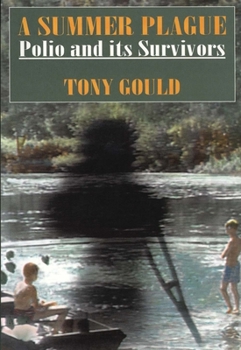A Summer Plague: Polio and Its Survivors
Select Format
Select Condition 
Book Overview
Polio--often called the "summer plague"--struck hundreds of thousands of children around the world between its emergence as an epidemic disease in 1916 to its cure in the 1950s. Today, images of children with crutches and leg braces or encased to their necks in iron lungs may be little more than a painful memory. Yet during its height the disease induced panic on a scale reminiscent of the great plagues of history. This book is the most comprehensive...
Format:Paperback
Language:English
ISBN:0300072767
ISBN13:9780300072761
Release Date:October 1997
Publisher:Yale University Press
Length:384 Pages
Weight:1.44 lbs.
Dimensions:1.0" x 6.2" x 9.2"
Customer Reviews
2 ratings
A GRIPPING HISTORY OF POLIO IN THE TWENTIETH CENTURY.
Published by Thriftbooks.com User , 26 years ago
From Jack Trombadore Book Reviews New Jersey Polio Network Newsletter, Spring 1996For anyone who has survived polio, the year, summer, indeed, the day that he or she first had polio will always mark the time of the Plague, "The Crippler," as it was known for many decades, whether that time is personally recalled or recounted by family members. In A Summer Plague, Polio And Its Survivors, award-winning author Tony Gould, who had polio at age twenty in 1959, while a junior officer in the British military in Hong Kong, gives us a wide-ranging and thoroughly gripping history of polio throughout its most destructive period, the twentieth century, and the ways in which this country and most of Western Europe coped with this scourge. Gould acknowledges that most of the world's population has not yet received anti-polio vaccine and that much remains to be learned about post-polio syndrome. In the 1970's and into the 1980's there was an increasing medical ignorance about polio; "people troubled by its after-effects were dismissed by doctors either as hypochondriacs or, worse, neurotics in need of psychiatric treatment." Polio first appeared in epidemic proportions at the end of the nineteenth century in Scandinavia, with the first major outbreak in the United States in 1916 in New York City. During the week of August 5 there were 1151 reported cases of polio with 301 deaths in the city. The authorities and families with young children were overtaken with panic; as many as 50,000 children of the well-to-do were sent out of the city to places considered safe from the epidemic. On the other hand, cities, Hoboken, for example, absolutely forbade all-nonresidents from entering; on July 18, 1916, police turned away 150 families trying to enter Hastings-on-Hudson. Children from poorer sections of the city were quarantined that year for up to eight weeks regardless of being asymptomatic. It was later found that wealth, poverty and/or living conditions were all irrelevant. Many cases went unreported by families fearing the quarantine. For some months it was believed that cats and dogs were responsible for the spread of polio, and many thousands were rounded up and destroyed. Nationwide in 1916 there were 27,000 reported cases of polio with 6,000 deaths, 2,343 of these in the city.No account of polio in the United States would be complete without a retelling of the story of FDR who contracted polio in 1921 and believed for most of his remaining years that strenuous exercise, massage, and warm water bathing would cure him and restore his useless legs. The March of Dimes, Warm Springs, Ga, Sister Kenny, Drs.Salk and Sabin, and Basil O'Connor are familiar names, but, nevertheless, Gould provides an insightful and in-depth study of this cast and of the events shaped by them and others in medicine and in the politics and intrigues of medical rivalries. Politics was never absent from the constant struggle for money for treatm
A human interest textbook with empathy and heart.
Published by Thriftbooks.com User , 27 years ago
It needed doing and done it he has - combine the wish to understand Polio the disease in detached historical and dispassionate terms but to balance it with empathy and understanding of those who suffered Polio. "Suffered" proves to be the wrong word - "overcame", "conquered" are better. The human stories with which Tony Gould concludes his book inspire the reader. The total is a two part masterpiece - the facts and the reality. A text book with heart, stories with depth. A wonderful and worthwhile way to use the eyes, stretch the mind and lift the heart.





